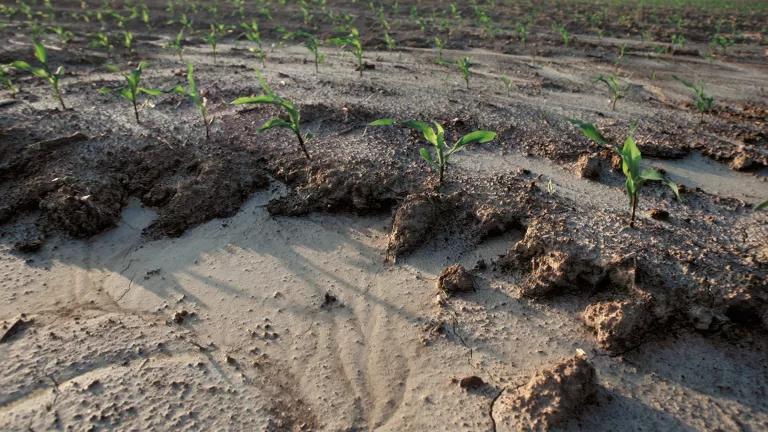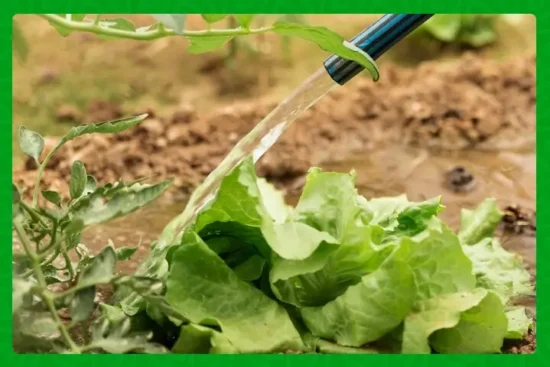
Soil erosion is a growing concern for African farmers, with the potential to cause significant productivity losses and damage to the environment. In Africa, soil erosion is especially problematic due to factors such as deforestation, overgrazing, and poor land management practices. In this article, we will explore how soil erosion affects farmers and crop productivity, using African examples.
How does soil erosion affect crop productivity?
Soil erosion has a significant impact on crop productivity. When soil erodes, valuable nutrients and organic matter are lost from the soil, leading to reduced yields. Soil erosion removes topsoil with associated nutrients and organic matter, making it more difficult for crops to obtain water and nutrients. Soil erosion can also lead to uneven crop growth as some areas of the field may be more affected by erosion than others, resulting in variations of crop growth patterns, areas of crop loss, and areas rendered untillable. Additionally, soil erosion can result in soil compaction, making it harder for plant roots to penetrate and access nutrients and water, leading to stunted plant growth and reduced yields. Ultimately, soil erosion increases potential input costs, as farmers may need to apply more fertilizer and other inputs to compensate for the loss of soil health quality.
How does soil erosion affect the environment?
Soil erosion not only affects crop productivity but also negatively impacts the environment. Soil erosion can lead to increased flooding as damage to soil structure and changes in soil topography result in a reduction of water-holding capacity. Soil erosion can also lead to decreased water quality as sedimentation increases in waterways, impacting aquatic life. Soil erosion can also release dust particles into the air, reducing air quality. Additionally, soil erosion reduces soil’s ability to sequester carbon and mitigate climate change, and it can result in the loss of plant and animal species in the immediate area of the erosion and areas downwind and down water from the area of erosion.
What are the leading causes of soil erosion?
Several factors contribute to soil erosion in Africa. The leading causes of soil erosion are water, wind, tillage, deforestation, and other causes such as overgrazing, construction, and changes in weather. In areas where soil is exposed and unprotected, heavy rain can cause soil particles to be washed away. Runoff from fields and construction sites can carry soil away and deposit it in waterways. In arid regions with little vegetation or where the area is exposed, strong winds can blow away loose soil particles. Tilling can disrupt soil structure and make it more prone to erosion. Clearing forests can lead to soil erosion as vegetation is not there to hold the soil in place.
What are potential solutions to offsetting soil erosion?
Several solutions can help combat soil erosion, primarily falling back on the farmer to implement them. These solutions include reducing tilling practices, implementing cover crops, adding conservation buffers, utilizing products that improve soil quality such as microbials, and incorporating other agricultural practices such as terracing and contour farming.
Reducing tilling practices involves implementing reduced or no-till agriculture methods, which maintain crop coverage and/or crop residue on the soil surface. This method of agriculture eliminates or diminishes soil-disturbing practices such as plowing. No-till holds soil in place when faced with wind or flowing water. Ultimately, it doesn’t just reduce soil erosion but increases soil quality and nutrient retention in the ground for the following season.
Implementing cover crops is a component of no-till agriculture. Cover crops help keep the soil covered, holding the soil in place. It also provides other benefits such as weed suppression and nutrient cycling, and depending on the cover crop used, provides an additional source of revenue.
Terracing and contour farming are other agricultural practices that can help offset soil erosion. Terracing involves constructing level areas on slopes, which can slow the flow of water and reduce soil erosion. Contour farming involves planting crops perpendicular to the slope of the land, which helps to slow water flow and reduce soil erosion.
In addition to these practices, it is essential to protect and restore natural areas such as forests, wetlands, and grasslands. These areas help to reduce soil erosion by providing a natural barrier against wind and water. They also help to protect water quality, provide habitat for wildlife, and provide other ecosystem services.
It is also important to consider the effects of climate change on soil erosion. Climate change can lead to more intense rainfalls, which can increase the risk of soil erosion. Therefore, farmers must adopt practices that are resilient to climate change, such as conservation tillage and cover cropping.
Places where Soil Erosion is affecting Farmers
Soil erosion is a significant problem in many African countries, where it can have a severe impact on agriculture, water resources, and the environment. Here are some examples of soil erosion in Africa:
- Ethiopia – Soil erosion is a significant problem in Ethiopia, where it is estimated that more than 75% of the land is affected by erosion. The problem is particularly acute in the highlands, where steep slopes, deforestation, and intensive farming practices have led to widespread erosion.
- Kenya – In Kenya, soil erosion is a significant problem in the highlands, where deforestation, overgrazing, and intensive farming practices have led to widespread erosion. The problem is particularly severe in the Rift Valley, where steep slopes and heavy rainfall make erosion a significant challenge.
- South Africa – Soil erosion is a major problem in South Africa, where it is estimated that more than 65% of the land is affected by erosion. The problem is particularly acute in the Eastern Cape and KwaZulu-Natal provinces, where steep slopes and heavy rainfall make erosion a significant challenge.
- Tanzania – In Tanzania, soil erosion is a significant problem, particularly in the highlands, where steep slopes and intensive farming practices have led to widespread erosion. The problem is particularly acute in the Usambara Mountains, where deforestation, overgrazing, and farming practices have led to significant soil erosion.
Conclusion
Soil erosion is a significant problem that can have severe consequences for farmers, crop productivity, and the environment. However, there are solutions available to combat soil erosion, including reduced tillage practices, cover crops, conservation buffers, microbial products, and other agricultural practices such as terracing and contour farming. It is important for farmers and policymakers to work together to implement these solutions to protect our agricultural systems and the environment for future generations.


















